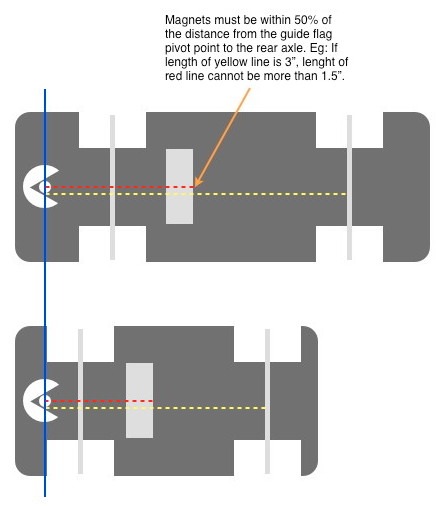Please also see the 2020 class rules separated by class as they supersede whatever conflicts with them below.
Amendments for the 2020 racing season are indicated in blue. Amendments made during the 2020 racing season (if any) are indicated in purple.
FRC Car Classification Basis
Cars are classified based on a number of criteria of which the following four are the main ones for most classes. These classifications are aimed at ensuring that any car can theoretically be competitive in its class, regardless of the slot car manufacturer. IROC classes are excluded from these requirements.
NOTE: The word "magnet" (or "magnets") below refers to magnets installed in cars to create the equivalent of what we call downforce in real cars. This "downforce" is generated by the magnetic attraction to the power rails on the track surface and gives cars more traction, allowing higher cornering speeds.
- 1. Body type (applies to all classes)
Body type is the first item considered and it determines the class and era that the actual car races or raced in. This ensures, for example, that a 1970s Ford Escort does not run in the same race as a 2010 Le Mans Prototype (LMP) car.
2. Motor (applies to most classes)
Motor RPM is the second item considered. Each class has a maximum RPM allowance, however the motor may be from any manufacturer. This is to try to keep cars with performance characteristics relative to their body type and era.
3. Magnet Location (applies to most classes)
The magnet location is the third item considered. The ideal magnet location for the best handling is generally below the rear axle. The further forward of the rear axle that the magnet is located, the less the car's roadholding ability (see this for explanation/confirmation). Some classes allow magnets to be located anywhere on the chassis, while others require that any magnets installed be a specific distance ahead of the rear axle. Again, this is to try to keep cars with performance characteristics relative to their body type and era.
4. Magnet Strength (applies to most classes)
This is the final major item used in classifying cars. The stronger the magnet downforce, the faster the car will go through the turns. To ensure that cars are relatively equal in handling performance within each class, we use something called the Upside Down rule ("USD rule"). This rule requires that the car must not stick to a piece of standard Scalextric Sport track when held upside down. This is checked using the official FRC USD test block.
Technical Inspection
Cars are subject to pre or post-race tech inspection and those not complying are ineligible for competition or subject to disqualification.
General (applies to all classes)
- Cars must have four wheels with tyres and a body.
- Car body must be a 1/32 scale model of an actual car, past or present. Body may not be modified in a way which significantly lightens it or renders it indistinguishable from original car. Transparent bodies must be painted. All cars must have racing numbers displayed at least on each side. Owners are encouraged to include other realistic-looking decoration on their cars, such as sponsor advertising and number roundels.
- A driver figure comprising at least a head must be present in the driver position of the car unless the specific class allows the windows to be tinted so as not to reveal the cockpit. Open cockpit cars require a driver and a "shelf"; closed cars require at least a driver head, front and rear glass and a cover over the mechanicals. (With the exception of cars where the windows are tinted.)
- All tyres must be of a silicone, rubber, rubber-like or urethane construction. No o-ring or sponge tires allowed.
- All tyres must be run DRY, with no traction compounds or treatments added. Cleaner residue or softening treatments must have been removed before placing the car on the track. Any car that leaves a residue on the track surface shall be immediately disqualified and removed from the race.
- Non-magnetic weight may be added to cars. See the reference to weight under "Upside-down Rule ("USD rule") Definition" below (last sentence).
- Weights or magnets added to the underside of the chassis must be securely affixed so as to not be dislodged during a race. They must also be completely covered by plastic tape.
- The body mounting screws may be loosened. If they are, they MUST BE COVERED with tape to prevent them falling on to the track.
- Any braid may be used.
- Where a minimum ground clearance is specified, for magnet classes, this minimum only applies to areas under all installed magnets. For non-magnet classes, this applies to the area under the motor.
- Where the word "Free" is used for any category below, it must still comply with these "General" regulations.
- For classes where any form of motor restriction applies (eg: RPM), motor make and model must be identifiable so as to ascertain its eligibility for the class. (Eg: Leave original label/markings on motor.)
- For magnets, "Standard" refers to both the size and type of magnet as well as its location. Cutting through the bottom of a standard magnet location to get the magnet closer to the the track is not considered the magnet's "standard location" and is therefore not allowed in classes where standard magnets or magnet locations are required.
- Only one guide is allowed per car. Guide is defined as any part of the car which runs below the track surface in the slot.
- Where a minimum weight is specified, a leeway of up to 1gm will be permitted.
Where a class stipulates the USD rule, the car must drop away from a C7016 Scalextric Single Lane Half-straight 175mm (henceforth referred to as the "test block" or "block") that is held still in an upside-down position. The test will be done by first ensuring that the braid is flattened against the guide, then placing the car on the block and turning the block upside down horizontally while holding the car in place. The car is then released. Once either the front or rear wheels (or both) drop away from the test block, the car has passed the test. The car will NOT be rolled back and forth on the block to help it locate a spot where it drops away. The car will NOT be touched once it is released. It must fall off the block unaided. If a car fails the test, it must be adjusted until it passes the test. This adjustment must not be made by raising the braid. The car must be tested as it will race. Magnet stacking is allowed. Any weight added to the car must be positioned within 2.5" (64mm) and no further back than the rear axle.
Helpful link: Some ways to fine-tune for passing the USD rule
Checking the ground clearance (where applicable):
For all classes requiring 1.0 mm ground clearance, this is to be measured by placing the car right-side-up on piece of track that is fixed to a solid base which cannot flex. Measurement is to be done with the car placed in the slot, parallel to rails. Gauge must move with no or minimal resistance for car to be legal.
Items not mentioned in the classes below:
For each class below, cars need only comply with the General items above and with the items mentioned for the class. Everything else is allowed.
"IROC" Classes (cars owned by FRC)
- Porsche Cup (PC) - "IROC" class for Scalextric Porsche 997s - Generally run as "Mixed GT" with Lambo Series and Ferrari Team Challenge cars.
Lambo Series (LS) - "IROC" class for Scalextric Lamborghini Gallardos - Generally run as "Mixed GT" with Porsche Cup and Ferrari Team Challenge cars.
Ferrari Team Challenge (FTC) - "IROC" class for Scalextric Ferrari F430s - Generally run as "Mixed GT" with Porsche Cup and Lambo Series cars.
Mini Challenge (MC) - "IROC" class for Scalextric BMW Minis.
Nissan GT-R Super Series (NSS) - "IROC" class for Scalextric Nissan GT-Rs.
Special Classes
Kitbash Class (formerly called Scratch Built)
For roadgoing cars from 1950 onwards that are not production slot cars.
- Period: 1950 onwards.
- Body: Body must comply with General item 2. Windows may not be tinted - interior must be visible. Maximum body width of 60 mm. Wheels/tyres may not protrude more than 2 mm beyond bodywork when viewed from above. Body must be decorated with at least a number on each side. Other decorations such as sponsor decals, roundels, etc. are encouraged.
- Chassis: Any chassis which is not specifically designed by the manufacturer of the body for that body. These include completely or partially scratch-built chassis, generic chassis (eg. Slot.It HRS, MRRC Sebring, Penelope Pitlane and PCS) and 3D printed chassis. Angle-winder configurations are prohibited.
- Interior: At least a full shelf with driver head, arms, steering-wheel and roll bar/cage. These items must be painted to appear realistic. Ultra-light/one-piece plastic interiors are not allowed. Must comply with General item 3.
- Motor: FC-130: H&R Racing HRMJR1 14,000 RPM Jack Rabit Motor. FF-050: M/T-SL1 Motor - Slim Can - 14,700 RPM. Both of these motors are available in the US at www.slotcarcorner.com. The Jack Rabbit motor is also available at http://www.professormotor.com.
- Magnets: No traction magnets allowed.
- Ground Clearance: 1.0 mm minimum under motor.
- Wheels: Free, except that wheels or wheel inserts modeled after real wheels are required.
- Outer Track Limit (left to right tyre edges): 64 mm.
Stock Classes

Slot.It Challenge (SC)
For basically-unmodified Slot.It brand Group C cars only.
- Period: 1982-1993.
- Body: Windows may not be tinted - interior must be visible.
- Chassis: Standard for the particular model.
- Interior: Standard for the particular model.
- Digital Chip: Slot.It brand only.
- Motor: Standard Slot.It orange-endbell 21,500 RPM motor.
- Gearing: Gears may be changed however axle gears must be Slot.It.
- Motor Pod (where applicable): Motor pod may be changed but must be inline Slot.It.
- Magnets: A single currently-available standard Slot.It "non-race" magnet (the one with the grooves) which must be positioned in any of the standard locations on the Slot.It motor pod.
- Ground Clearance: 1.0 mm minimum under magnet.
- Wheels: May be changed but must be Slot.It.
- Axles: Standard for the particular model.
- Tyres: May be changed but must be Slot.It.
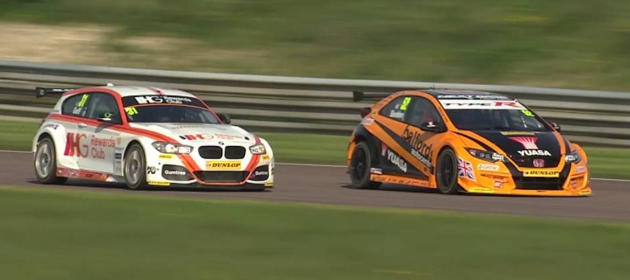
Scalextric BTCC
For the following Scalextric slot models of BTCC cars (from 2014 onwards):
MG6 GT AMD BTCC
Honda Civic Type R BTCC
BMW 125i BTCC
VW Passat BTCC
In the interest of having individual liveries, prospective entrants must register the model and livery they are interested in with FRC. These registrations will be posted on the FRC forum. Registrations will be on a first-come, first-served basis. Once a car has been registered, no one else may register that model and livery and the registrant must produce the car within six weeks of registering. If the registrant fails to produce the car within this time, it will be removed from the registry and available for registration again. The original registrant may not re-register that model and livery for another six weeks.
See car reservations and reserve your car here:
viewtopic.php?f=6&t=1525
- Period: 2014 onwards.
- Body: Windows may not be tinted - interior must be visible. Livery must replicate an actual BTCC car of the same model.
- Chassis: Original Scalextric non-PCR chassis for the particular model. May be sanded for float (max gap 1.0mm).
- Interior: Original for the particular model. May be modified as long as alterations are not visible through the windows (e.g. no extra holes cut in the interior pan). Interior tray bearing retainers may be removed.
- Digital Chip: Unmodified C8515 DPR chip and hatch. Chips may be randomly switched between competing cars.
- Motor: Any FC-130 motor up to 18,000 RPM, based on manufacturer's specifications. The standard motor is rated at 18,000 RPM.
- Gearing: Standard axle gear. Pinion may be changed.
- Magnets: Modified USD rule (see diagram below). Any installed magnets must be placed in the standard location for the chassis and stacking is allowed. Cars with just the standard magnet should be compliant.
- Wheels: Standard.
- Axles: Standard.
- Tyres: Type of tyre is free. Front tyre minimum diameter: 18mm on wheel. Rear tyre minimum diameter: 19mm on wheel. Rear tyre maximum tread width: 10mm (excluding sidewall). Standard tyres are about 19.5mm on wheel.
- Minimum Weight:BMW and Honda: 80gm. MG and VW: 85gm.
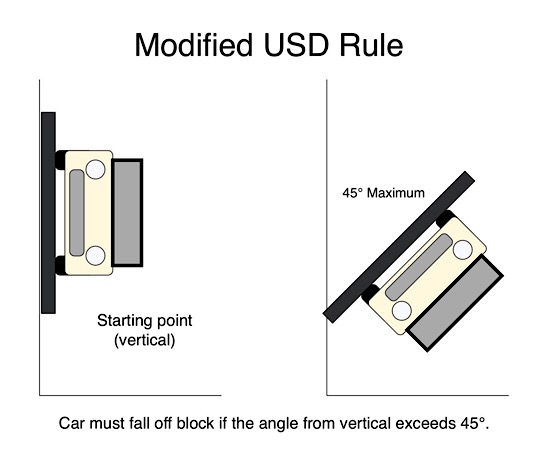
Restricted-Modification Classes

Formula 1 (F1)
For F1 cars that meet the following requirements. (Standard and rules-compliant modified Scalextric and Carrera F1 cars are legal for this class.)
- Period: 2000 onwards.
- Body: F1 or F1-type body (must be painted - no unpainted bodies allowed. We want this class to have cars that look like real F1 cars). Front spoiler and rear wing are encouraged. Wing attachments can be reinforced (no tape is allowed on the top surface of the wing).
- Car Max Width: 63mm (left tyre edge to right tyre edge).
- Interior: At least shelf and driver head required.
- Motor: Any motor up to 18,000 RPM.
- Magnets: USD rule. Magnets must be positioned at least 5mm ahead of rear axle (rear magnet position of inline Slot.It pod).
- Wheels: Max diameter of 14mm without tyres, excluding centre ridge. F1-type wheel spokes or spoke inserts are encouraged.
- Tyres: Front: Free but must be no less than 18mm diameter. Rear: Free but must be F1 size (no less than 18mm diameter and no less than 11mm wide).

Rally Car (RC)
For slot models of rally cars.
- Body: Must be modeled after a rally car. Windows may be tinted so as not to reveal the cockpit.
- Interior: Free but if visible must have both driver and navigator figures (heads minimum).
- Motor: 21,500 RPM or lower, based on manufacturer's specifications. "Magnet-effect" motors are not allowed.
- Magnets: No magnets allowed. Any car found to stick (i.e. does not roll/move) to a standard section of Scalextric Sport track when the track is elevated to 45 degrees will be deemed to have failed and not be eligible for use. This can be referred to as the "45-degree rule".
- Ground Clearance: 1.0 mm minimum under motor.

Historic Saloon (HS)
For slot models of cars based on production saloon/sedan and road going sports cars from the 1960s and 1970s, but excluding cars eligible for the American Pony Car class.
- Period: 1960-1979.
- Body: Windows may not be tinted - interior must be visible. Maximum body width of 60 mm.
- Chassis: Original for the particular model, but may be modified provided guide flag position and axle positions remain unaltered. Angle-winder motor/gear configurations are prohibited.
- Interior: Full interior as standard for the particular model, however this may be altered if necessary, but only to the extent required to install digital chip and/or to clear motor.
- Motor: Any non-high-downforce motor not exceeding 18,000 RPM, based on manufacturer's specifications.
- Magnets: USD rule. All magnets must be positioned ahead of centreline of the distance between guide flag pivot point and rear axle (see diagram below).
- Wheels: Standard for the particular model, or may be substituted, but must be as close as possible to standard diameter (excluding ridge) for the particular model. Wheels or inserts that match or are close to original wheel design are required.
Vintage Sports '60-'75
This class includes both the GT and Prototype cars that competed during the period 1960 to 1975 and is divided into two sub-groups as indicated below.
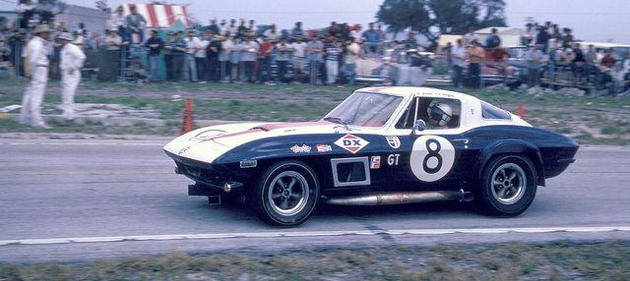
Vintage Sports GT '60-'75 (VSG6075)
For slot models of racing GT cars from 1960 to 1975.
- Period: 1960-1975.
- Body: Windows may not be tinted - interior must be visible.
- Chassis: Free, however angle-winder motor/gear configurations are prohibited.
- Interior: May be modified to allow fitting of electronic components. It can be substituted by at least a full shelf with driver head, arms, steering-wheel and roll bar/cage. These items must be painted to appear like the original. Ultra-light/one-piece plastic interiors are not allowed.
- Motor: 18,000 RPM or lower, based on manufacturer's special.
- Magnets: USD rule. Magnets must be positioned at least 40mm ahead of rear axle. (This corresponds to the front magnet location on Slot.It motor pods.)
- Wheels: As close as possible to standard diameter for the particular model but may be substituted. Wheel inserts that match or are close to original wheel design are required.
- Minimum Weight: 90gm.
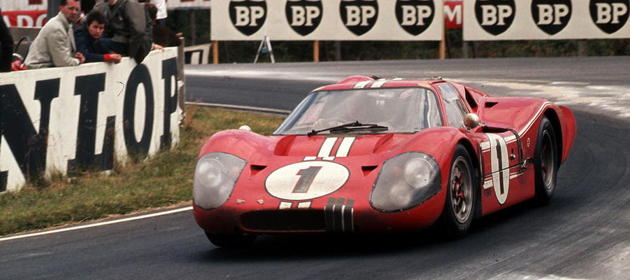
Vintage Sports Prototype '60-'75 (VSP6075)
For slot models of racing prototype cars from 1960 to 1975.
- Period: 1960-1975.
- Body: Windows may not be tinted - interior must be visible.
- Chassis: Free, however angle-winder motor/gear configurations are prohibited.
- Interior: May be modified to allow fitting of electronic components. It can be substituted by at least a full shelf with driver head, arms, steering-wheel and roll bar/cage. These items must be painted to appear like the original. Ultra-light/one-piece plastic interiors are not allowed.
- Motor: 22,500 RPM or lower, based on manufacturer's specifications.
- Magnets: USD rule. Magnets must be positioned at least 40mm ahead of rear axle. (This corresponds to the front magnet location on Slot.It motor pods.)
- Wheels: As close as possible to standard diameter for the particular model but may be substituted. Wheel inserts that match or are close to original wheel design are required.
- Minimum Weight: 77gm.

American Pony Car (APC)
For slot models of American "Pony Cars" that took place in the Trans-Am series between 1966 and 1972. (Standard and rules-compliant modified Scalextric, Pioneer, Carrera and other manufacturer Pony Cars are legal for this class, but must meet the magnet requirements below.)
- Period: 1966-1972.
- Body: Must be modeled after American "Pony Cars" that took place in the Trans-Am series 1966-1972. Fender modifications not allowed. Wheels and tyres must not be visible when viewing body from above. Windows may not be tinted - interior must be visible.
- Chassis: Original for the particular model, but may be modified provided guide flag position and axle positions remain unaltered.
- Interior: Full interior as standard for the particular model, however this may be altered if necessary, but only to the extent required to install digital chip and/or to clear motor.
- Motor: Any non-high-downforce motor not exceeding 21,500 RPM, based on manufacturer's specifications.
- Motor Pod (where applicable): Standard for the particular model.
- Magnets: USD rule. All magnets must be positioned ahead of centreline of the distance between guide flag pivot point and rear axle (see diagram under Historic Saloon above).
- Wheels: Must be either 12mm or 13mm in diameter (excluding the ridge). Wheels or inserts that match or are close to original wheel design are required.
- Tyres: Type of tyre is free. Front tyre minimum diameter: 17mm on wheel. Rear tyre minimum diameter: 19mm on wheel. Rear tyre maximum tread width: 8mm (excluding sidewall).

Modified Production (MP)
For slot models of cars based on non-GT production cars, but excluding cars eligible for the American Pony Car class.
- Body: Must be based on a non-GT production car. Windows may be tinted so as not to reveal the cockpit.
- Motor: 20,000 RPM or lower and torque must be under 200 gm/cm, based on manufacturer's specifications. The RPM and torque figures must be verifiable.
- Magnets: Modified (45º) USD rule (see diagram under BTCC above). All magnets must be positioned at least 5mm ahead of rear axle (rear magnet position of inline Slot.It pod).
- Eligible cars:
To qualify, body must be based on a non-GT car that is constructed principally for retail sale to consumers for their personal use and to transport people on public roads (no commercial or industrial vehicles are eligible), but may be modified by the addition of fender flares/extensions, wings and spoilers. Examples of non-eligible GT cars are Porsche 911/997, any Ferrari or Lamborghini and most cars with "GT" in their names. If in doubt about a particular car's eligibility, please email Gordon at quicklapper@gmail.com.
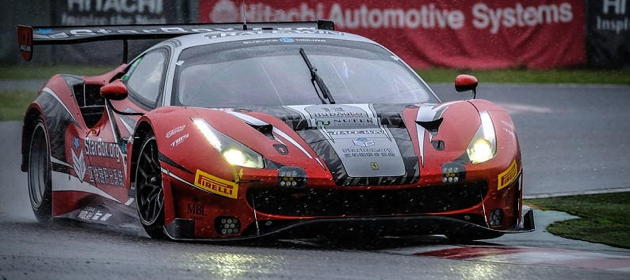
Restricted GT (RGT)
For slot models of two-door cars which compete in GT racing.
- Period: 1976 onwards.
- Body: Must be modeled after a two-door car which competes in GT racing. Windows may be tinted so as not to reveal the cockpit.
- Motor: 23,500 RPM or lower, based on manufacturer's specifications.
- Magnets: USD rule. Magnets may be positioned anywhere on the chassis.
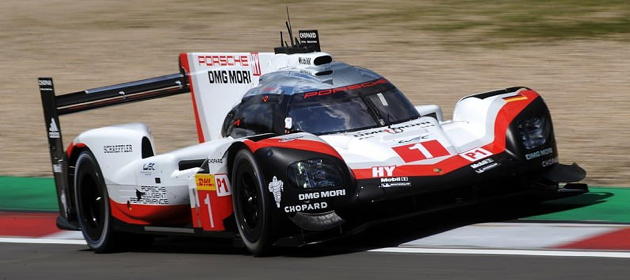
Restricted LMP (RLMP)
For slot models of prototype (non-production) cars from 1976 onwards which compete in LMP racing.
- Period: 1976 onwards.
- Body: Must be modeled after car which competes in LMP racing. Windows may be tinted so as not to reveal the cockpit .
- Motor: 26,000 RPM or lower, based on manufacturer's specifications.
- Magnets: USD rule. Magnets may be positioned anywhere on the chassis.
